-
TrackoBit
Manage commercial vehicles with the new-age Fleet Management Software
TrackoBit -
TrackoField
Streamline your scattered workforce with Field Force Management Software
TrackoField -
Features Resources
-
Blog
Carefully curated articles to update you on industrial trends. -
White Paper
Insightful papers and analysis on essential subject matters. -
Glossary
Explore an alphabetical list of relevant industry terms. -
What’s New
Get TrackoBit & TrackoField monthly updates here. -
Case Study
Explore the cases we solved with our diverse solutions. -
Comparisons
Compare platforms, features, and pricing to find your best fit.
-
About Us
Get to know TrackoBit: our team, ethos, values, and vision. -
Careers
Join the most dynamic cult of coders, creatives and changemakers. -
Tech Support
Learn about our technical support team and services in detail. -
Events
Check out the exhibitions where we left our marks and conquered. -
Contact Us
Connect with us and let us know how we can be of service.
Sustainable Last Mile Delivery: Solutions to Achieve a Greener Logistics
- Author:Tithi Agarwal
- Read Time:9 min
- Published:
- Last Update: May 23, 2025
Table of Contents
Toggle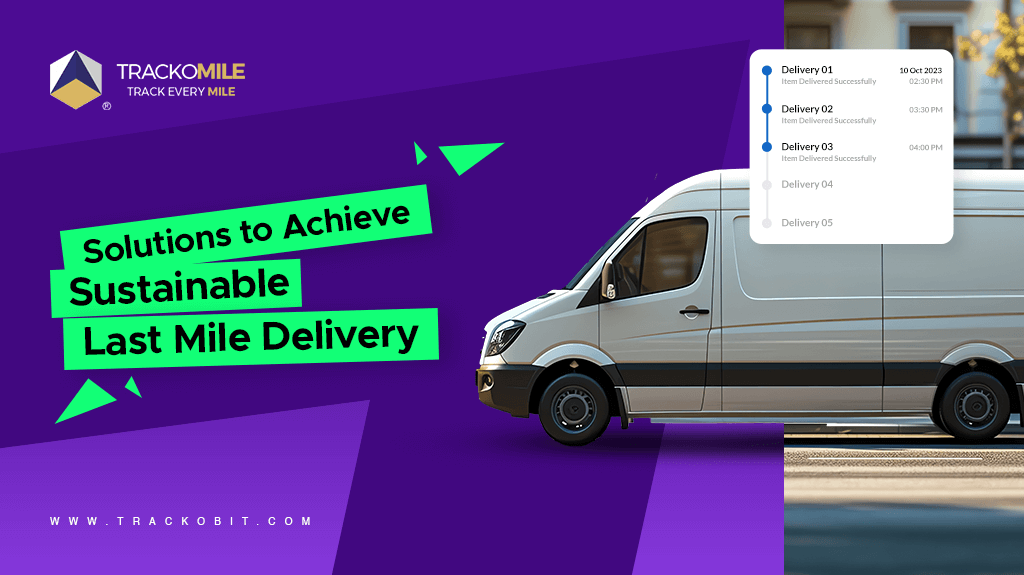
Sustainability in last-mile delivery is not a myth but rather a possibility and a dire necessity after bearing the brunt of global warming. Using the right sustainable last mile delivery solutions can make low-carbon logistics a reality.
Table of Contents
Toggle
The carbon footprint of last mile logistics is increasing along with the demand for at-home delivery services. Logistics companies are facing legal action to reduce their carbon emissions. Nevertheless, the need for expedited fulfillment is driving up trip volumes, which in turn is increasing the carbon footprint. Businesses are compelled by this paradox to choose between sustainability and customer experience objectives, but it is not practical in practice without the right sustainable last mile delivery solutions. Rejecting sustainable last mile delivery may harm your reputation and result in serious consequences while rejecting customer needs will lead to problems with business continuity.
The boom in delivery vehicles on the road will release an additional six million metric tons of carbon emissions by 2030. What can companies do to curb this negative environmental impact while balancing sustainability, costs, and efficiency?
However, by adopting the right technologies, digitalizing paperwork-heavy processes can simplify the complexities of the last mile. Upgrade entire delivery networks and plan their path to sustainable logistics.
What is Sustainable Last Mile Delivery, Exactly?
In the last-mile setting, sustainable delivery (also known as green delivery) refers to using any means of transportation to transfer goods from a merchant to a customer with the lowest possible environmental impact.
Even though green delivery is not a priority for all consumers (yet), there are clear signs that more shoppers are demanding more from the available delivery options.
At the same time, it seems that online shoppers don’t necessarily know what “sustainable delivery” offered by different e-retailers means.
This can ultimately cloud their judgment, and we can’t keep blaming them for it.
Steps Already Taken to Reduce Green Gas Emission in Last Mile Delivery
The demand for last-mile delivery is increasing daily. The World Economic Forum highlighted that by 2030, its demand will grow by 78%. Suppose no immediate action is taken to reduce emissions. In that case, the number of cars operating in the last-mile carrier ecosystem in the top 100 cities will increase by 36% by 2030 as businesses compete to meet customer expectations.
Consequently, traffic congestion will spike by 21%, and delivery traffic will increase by 32%. The increasing density of last-mile operations will multiply emissions and hasten the onset of natural disasters.
Around the world, governments are forcing businesses to develop more environmentally friendly business practices. Here’s a brief overview of some significant actions the governments of the United States, the United Kingdom, and the European Union have done to combat carbon pollution.
- The U.S. aims to curb CO2 emissions by approximately 1.1 billion metric tons and oil consumption by 530 million barrels.
- The U.S. can levy fines of more than $30,000 if businesses do not follow environmental regulations.
- England’s Environment Agency can order the closure or suspension of a business until an environmental law breach is rectified.
- Britain levies fines of up to $60,000 for bypassing environmental rules.
- The EU has established targets for reducing the average emissions from lorries by 2030.
The EU recently highlighted its target to shrink global emissions by at least 55% by 2030 from 1990 levels.
These targets and rules encourage large companies like Amazon, Unilever, and Walmart to implement sustainable last mile delivery. However, many other businesses still find it difficult to reduce their global carbon footprints.
These companies are missing out on the greater picture due to operational inefficiencies, changing customer needs, final mile tracking, and growing delivery costs. When examining current logistics processes, numerous opportunities exist to optimise routine delivery operations and lower CO2 emissions.
5 Inefficiencies Polluting Last-mile Operations
Inefficient packaging, growing trip volumes, failed delivery attempts, and increasing returns are some of the major culprits behind growing last-mile emissions.
1. Inefficient Packaging
Using too much plastic and packaging are two major causes of landfill expansion. A smart technique to ensure eco-friendly packaging is to use as little packaging as possible that complies with ISTA requirements. Other strategies to make Sustainable last mile delivery include switching to reusable containers, using “right size” packing techniques, cutting down on package layers, and continuously assessing the effects of packaging modifications.
2. Growing Trip Volumes
Trip numbers have skyrocketed due to increased demand for quicker deliveries, particularly since the epidemic began. As a result, it is causing more vehicles on the road, which is responsible for more emissions. This problem can be solved by skilfully arranging more consignment in fewer vehicles, creating incredibly effective multi-drop delivery routes, and smoothly carrying out time-slot deliveries. These can be automated and implemented with the right sustainable delivery solutions.
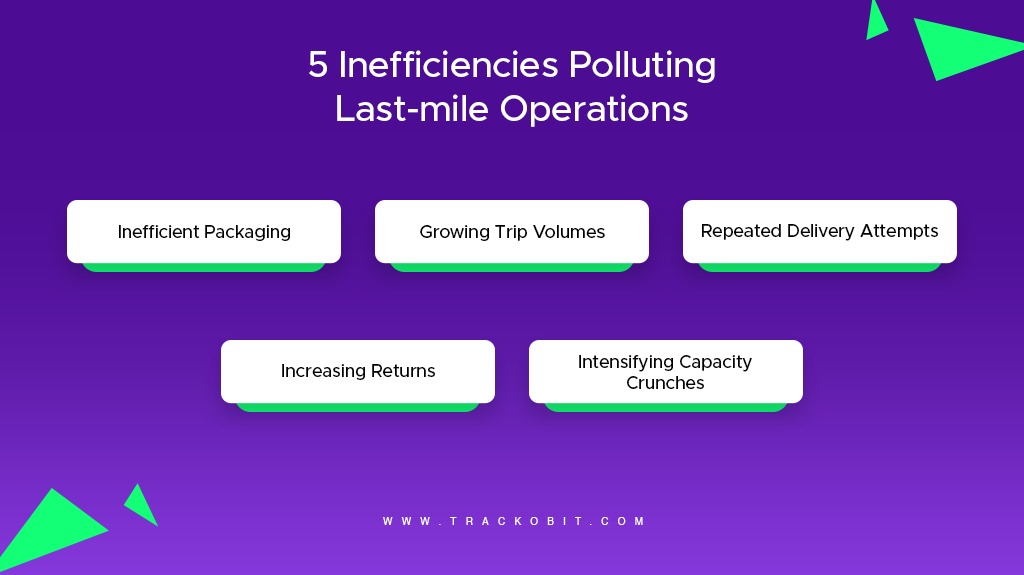
3. Repeated Delivery Attempts
Delivery delays, incomplete addresses, and client unavailability lead to repeated delivery efforts, which increase emissions in turn. A fantastic strategy to solve this issue and reduce emissions is to use solutions that allow flexible fulfilment, ensure address accuracy, and personalise client communication.
4. Increasing Returns
Returns contribute to a delivery task’s increased carbon footprint in two main ways. They produce two types of emissions: one from processing used goods and another from implementing reverse logistics. Returns can be reduced by utilising sustainable delivery solutions that enhance customer behaviour understanding, increase the visibility of the material handling process, and lower the likelihood of product damage.
5. Intensifying Capacity Crunches
Capacity constraints have been a regular issue in carrier ecosystems, particularly in LTL delivery models. Additionally, this issue increases trip numbers and negatively affects the goal of achieving sustainable last mile delivery. Businesses may tackle this difficulty by adopting sophisticated carrier management tools to increase vehicle utilization and onboard new logistics partners knowledgeable about local fulfilment operations. Moreover, adopting effective sorting and packaging techniques can enhance capacity planning.
The Benefits of Sustainability in Last Mile Delivery
Sustainability in last-mile delivery offers a range of benefits that extend beyond environmental impact. Some of the key advantages include:
1. Environmental Impact Reduction
- Lower Carbon Footprint: Businesses can drastically reduce the carbon emissions and air pollution associated with conventional delivery methods by using consolidation tactics, optimising routes, and using eco-friendly trucks.
- Resource Conservation: Sustainable methods help create a healthy environment by minimising fuel consumption, consuming less energy, and limiting the depletion of natural resources.
2. Cost Efficiency
- Operational Savings: Optimizing routes and consolidating deliveries decreases fuel and operational costs, leading to more efficient resource utilization and ultimately reducing expenses.
- Regulatory Compliance: Following sustainability laws and guidelines helps save possible regulatory costs by avoiding fines and penalties and preserving one’s good reputation.
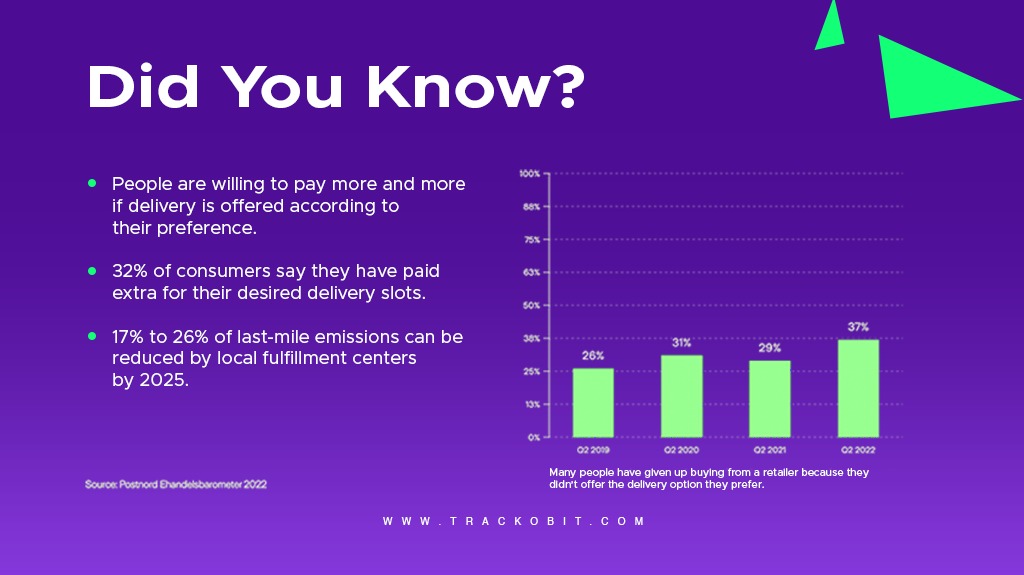
3. Enhanced Customer Satisfaction
- Faster and Reliable Deliveries: Effective last-mile tactics, such as micro-fulfillment centres and streamlined routes, result in quicker and more dependable deliveries, exceed client expectations, and raise satisfaction levels.
- Brand Loyalty: Consumers are increasingly valued by ecologically friendly methods. Adopting sustainability can improve a brand’s reputation and customer loyalty by drawing in and keeping environmentally conscientious consumers.
4. Adaptability and Innovation
- Technological Advancements: Adopting sustainability in the last mile frequently entails using cutting-edge technologies, such as drones, electric cars, and route optimisation software, which promotes innovation and technological improvements in the sector.
- Adaptability to Market Changes: Companies that place a high priority on making their last mile sustainable are better equipped to adjust to changes in the market and in consumer tastes, setting themselves up for long-term success in a quickly changing environment.
5. Social Impact
- Community Engagement: Using sustainable last mile delivery methods promotes social responsibility, encourages constructive community involvement, and boosts local economies. This is especially true when local delivery workers are hired and micro-fulfillment centres are established.
6. Long-Term Viability
- Future-Proofing: Businesses that invest in sustainable last-mile operations are better positioned for long-term profitability and resilience in the face of shifting rules and market demands as environmental concerns and regulations get more rigorous.
Sustainability in last-mile delivery is a holistic approach that positively affects customer satisfaction, brand image, operational efficiency, and long-term sustainability in an increasingly eco-conscious world. It goes beyond simply decreasing environmental impact.
Technologies for Achieving Sustainable Last Mile Delivery
Like many other facets of the supply chain, technology can play a pivotal role in improving green Sustainable last mile delivery. Shippers should look for last-mile delivery software like TrackoMile, which has features to help achieve Last-mile sustainability.
1. Multi-stop Route Optimization
Route optimization is a key tool that will help last-mile companies curb their CO2 emissions. The software suggests the shortest route after considering 120+ variables with optimized sequencing of halts that reduce:
- Unnecessary vehicles on the road
- Driving time and hours
- Amount of fossil fuel consumed
Additionally, using geocoding and machine learning algorithms, its dynamic routing capabilities lower trip volumes and miles travelled. They also guarantee address accuracy and increase first-attempt delivery success rates.
2. Real-time Tracking and ETA Sharing
Missed deliveries, redeliveries, and unexpected route delays can add substantial time and miles to routes and dramatically impact sustainable last mile delivery metrics. Real-time delivery tracking technology helps fill the gaps in last-mile management with smart identification and alerts in case of route deviations. This allows logistics teams to proactively address issues and reduce missed deliveries and additional miles to keep carbon emissions to a minimum.
Additionally, TrackoMile sends dynamic ETAs to consumers so they are aware of when their orders will arrive. This helps ensure they are available to receive the parcel, thus reducing the need for second-attempt delivery.
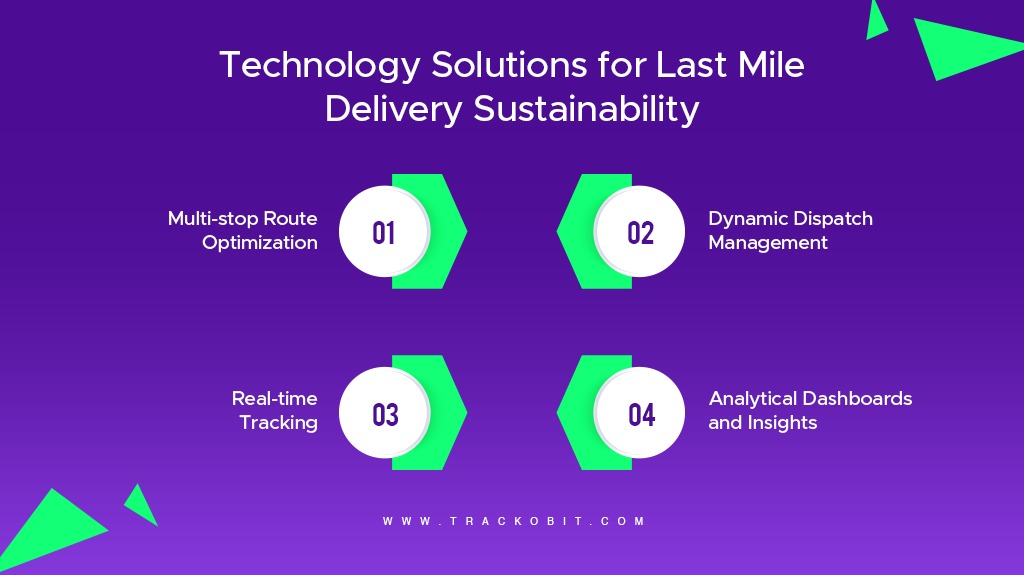
3. Dynamic Dispatch Management
Intelligent dispatch management technology is assisting businesses in reducing their annual carbon emissions by over 21,000 tonnes. It does this by smartly pairing orders with riders and creating optimal rider and order schedules. The system ensures that each vehicle’s capacity is utilised to the maximum, which reduces the need for additional vehicles.
The technology digitalizes the entire process, including the POD, reducing dependence on paperwork and making the process sustainable.
4. Analytical Dashboard and Insights
Advanced data analytics are necessary for sustainable last mile delivery to generate predictive results that inform future decision-making and guarantee continual improvement. With predictive analytics, shippers may anticipate future challenges before they become visible ones, making proactive risk mitigation and sustainability improvements possible.
Conclusion
It’s not too late to embark on a journey to sustainable last mile delivery operations. Given that our planet is experiencing global warming, it’s imperative that we adopt greener goals as soon as possible. It’s time we adopt technological solutions to make our last-mile footprints as green as possible. Adopting the abovementioned solutions will help you achieve susceptibility goals much faster, become a consumer favorite, and beat the competition.
TrackoMile’s last-mile delivery software has advanced solutions that can help your last-mile delivery business reduce greenhouse gas emissions, fuel consumption, and overall operational cost. Interested in learning more?
Tithi Agarwal is an established content marketing specialist with years of experience in Telematics and the SaaS domain. With a strong background in literature and industrial expertise in technical wr... Read More
Related Blogs
-
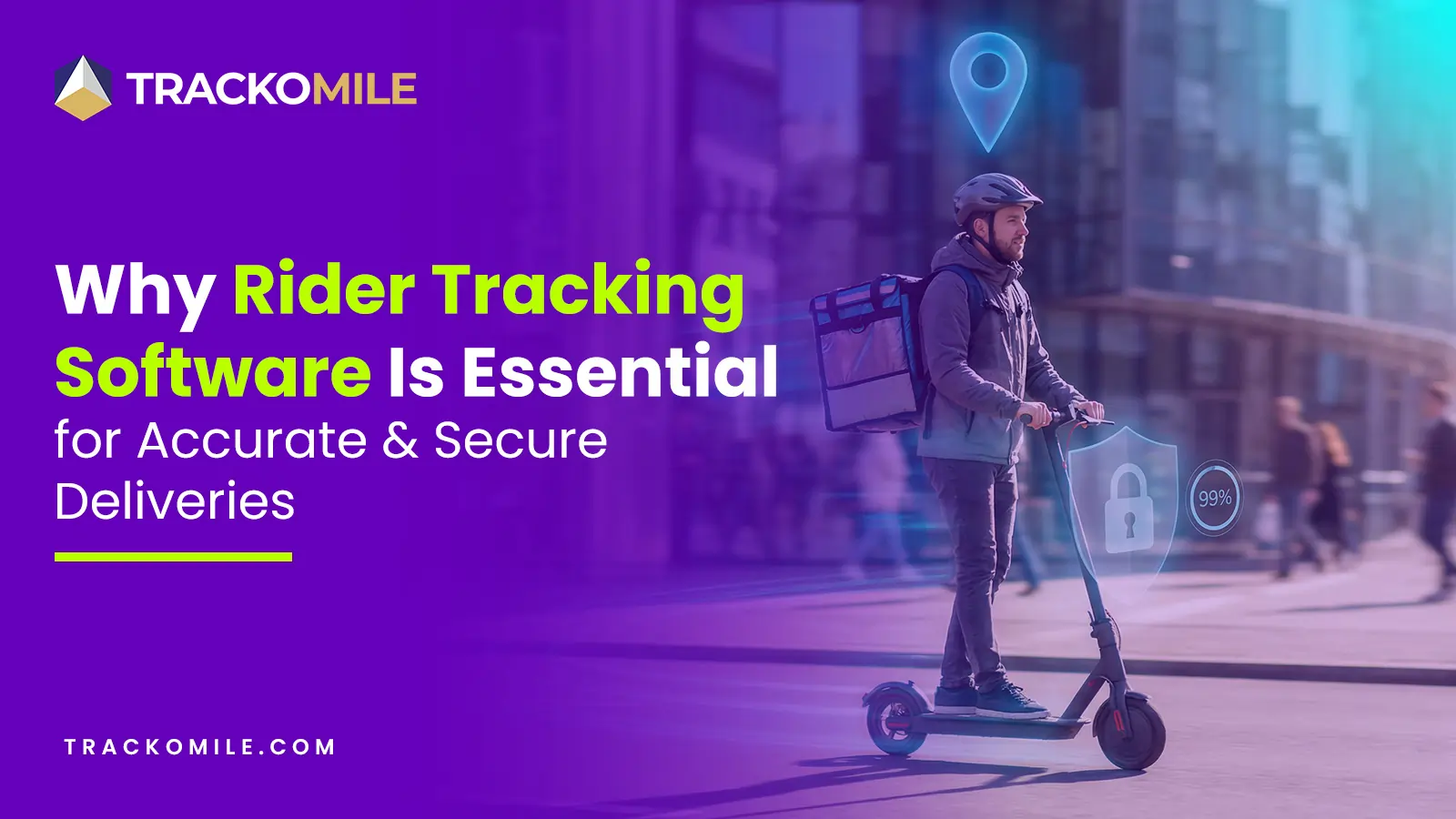
How Rider Tracking Software Improves Delivery Accuracy and Reduces Fraud
Tithi Agarwal December 8, 2025Rider tracking software improves delivery accuracy with real-time GPS visibility and automated ePOD. It also enables route optimisation and fraud…
-
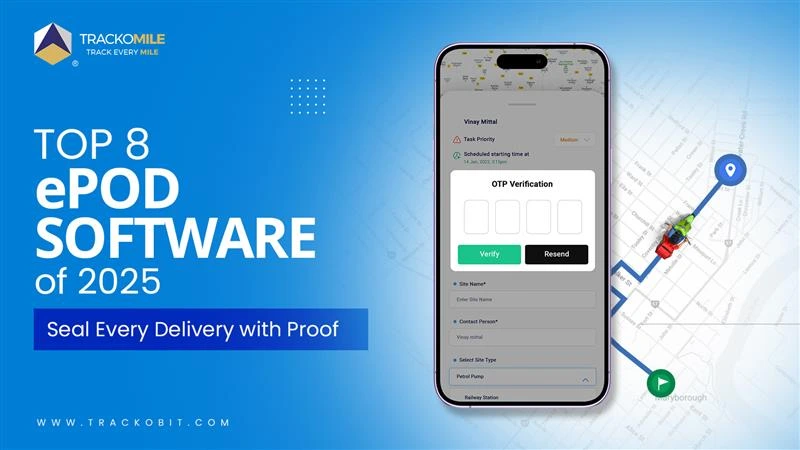
Top Electronic Proof of Delivery (ePOD) Software in 2025
Tithi Agarwal September 25, 2025Electronic proof of delivery has become the backbone of modern logistics. Explore the top 8 ePOD software in 2025 and…
-
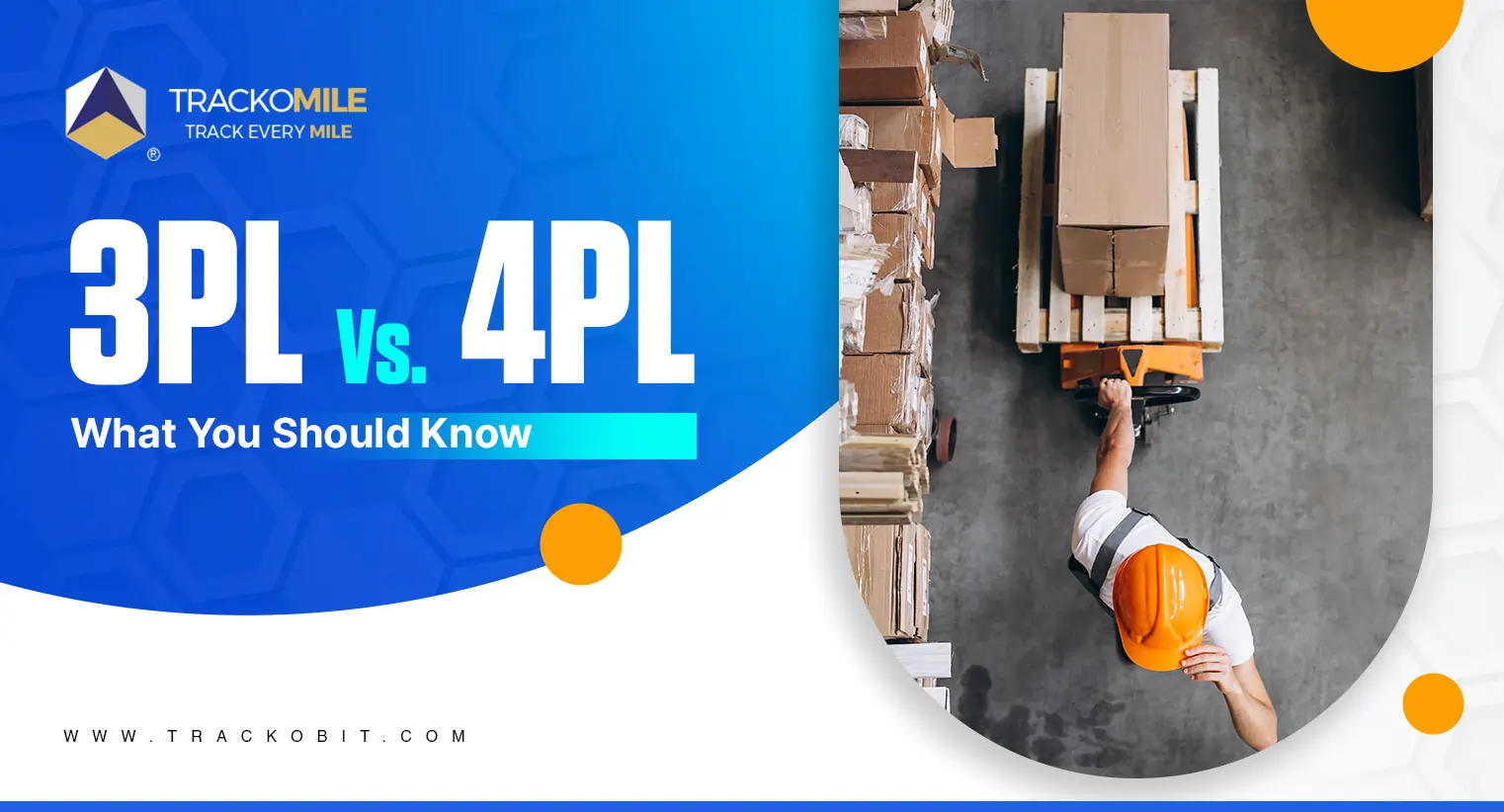
3PL vs. 4PL: Which is Best for Your Business?
Tithi Agarwal September 25, 2024Confused about choosing between 3PL and 4PL for your retail supply chain? Read this blog to find out which is…
-

What is Payload Capacity? Payload Capacity Vs. Towing Capacity
Tithi Agarwal September 10, 2024Payload capacity is the total weight a vehicle can safely carry, and it is crucial for safety and compliance. Exceeding…

Subscribe for weekly tips to supercharge your last-mile delivery.
Your inbox awaits a welcome email. Stay tuned for the latest blog updates & expert insights.
"While you're here, dive into some more reads or grab quick bites from our social platforms!"Stay Updated on tech, telematics and mobility. Don't miss out on the latest in the industry.
We use cookies to enhance and personalize your browsing experience. By continuing to use our website, you agree to our Privacy Policy.


































